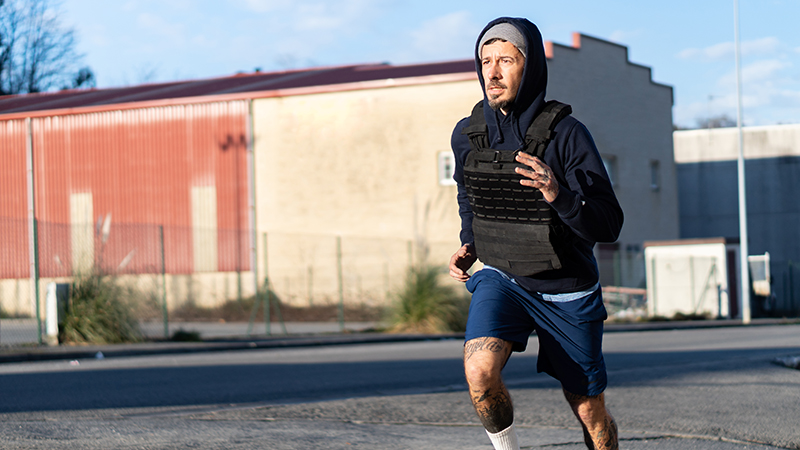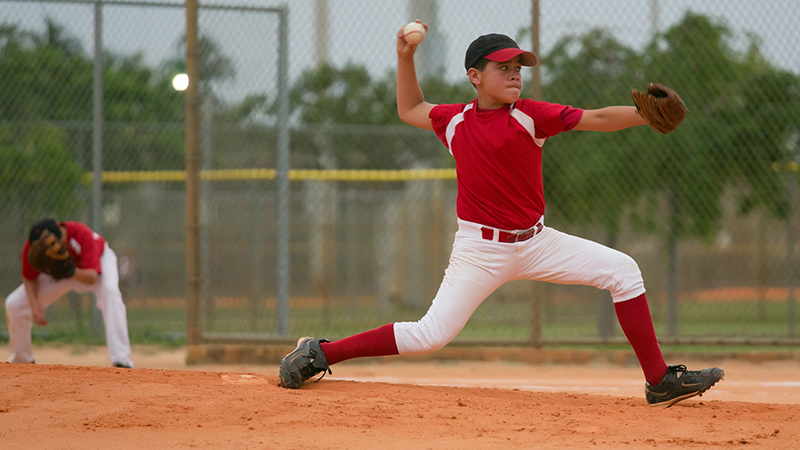Three Common Sports Overuse Injuries
Updated October 2023
Impact of Repetitive Training
Whether you enjoy working out regularly or play sports year-round, your body is susceptible to overuse injuries. An overuse injury is damage to bones, muscles, ligaments or tendons as a result of repetitive stress. Common causes include training or technique errors, which can be prevented.
For students, overuse injuries are more common in athletes who participate in year-round athletics and account for nearly half of injuries to students in middle school and high school.
Here are the most common overuse injuries and how to spot them.
Elbow and Arm Injuries
Your elbow joint is made up of bone, cartilage, ligaments and fluid. Frequent use of this joint can cause strains or fractures.
Overhand throwing places significant stress on the elbow. For baseball players, the most common throwing injury is known as Little League elbow, or medial epicondylitis. Pain will occur on the inside of the elbow, and throwing velocity will decrease. Golfers can also experience medial epicondylitis.
In tennis elbow, or lateral epicondylitis, tissue connecting the forearm muscle to the elbow is inflamed, much like it is in medial epicondylitis. However, because of the different type of motion, the pain will be felt on the outside of the arm.
Symptoms that indicate an elbow or arm injury has occurred include:
- Forearm pain
- Wrist pain
- Weak grip
- Decreased velocity in throwing
- Pain or swelling in the front of your shoulder and side of your arm
- Stiffness
Other common injuries can include:
- Osteochondritis dissecans
- Rotator cuff tendinitis (swimmer’s shoulder)
Knee Injuries
The knee is one of the largest joints in your body and, as a result, easily injured. Common knee injuries can include fractures, dislocation and tears of the muscles. These types of injuries are most common in sports that require jumping, twisting or sudden movements of the legs.
One of the most common knee injuries is an anterior cruciate ligament (ACL) sprain or tear. This is especially common for athletes in high-impact sports like soccer or football. This injury can occur when you change direction too rapidly, land from a jump incorrectly or stop suddenly.
Jumper’s knee (patellar tendonitis) is an injury that occurs in running or jumping sports when an athlete falls or puts force on the knee in an awkward position. This results in inflammation to the tissue joining the kneecap to the shin bone.
Symptoms that indicate a knee injury has occurred include:
- Swelling
- Pain when bending the knee
- Loss of range of motion
- Stiffness in the knee
- Tenderness
- Discomfort
Other common injuries can include:
- Iliotibial band (IT band) syndrome
- Runner’s knee (patellofemoral syndrome)
- Housemaid’s knee (pre-patellar bursitis)
- Medial collateral ligament (MCL) sprains
Foot and Ankle Injuries
Each foot has 26 bones, 33 joints and more than 100 tendons and ligaments. It’s no wonder foot injuries are so common. The amount of force placed on the foot when it hits the ground can cause lingering damage. (Runners, we’re looking at you.)
Shin splints (medial tibial stress syndrome) refers to the pain on the inner edge of the shinbone. Although they are commonly associated with running, they can occur after any physical activity. This occurs when this muscle becomes overworked.
Heel pain is another common injury among athletes. Known as plantar fasciitis, this effects the tendon that runs under the foot. This is especially common in runners, dancers and volleyball players.
Symptoms that indicate a foot or ankle injury has occurred include:
- Pain and stiffness in the foot
- Mild swelling along the tendon
- Tenderness to the location of injury
Common injuries include:
Overuse injuries can be prevented with the proper training. Here are some tips to help avoid injury:
- Allow your body adequate time to recover.
- Warm up and cool down after workouts.
- Introduce cross-training into your workout routine.
- Increase at a rate no faster than 10 percent per week.
- Listen to your body.
Northwestern Medicine offers a running medicine clinic that focuses on the prevention of injury and treating running injuries. Athletes can also participate in the performance clinic, which can help you maximize your performance safely. “The NM Running Medicine Clinic and NM Performance Rehab can help you prevent overuse injuries by doing a functional analysis of your strength, symmetry, and form (including video analysis) and utilize the results to give you an individualized exercise program to help ensure your success,” says Steven E. Mayer, MD, a sports medicine physician at Northwestern Medicine.
Seeking Treatment
“Overuse injuries are most successfully treated when symptoms are caught early and appropriate treatment and activity modification are initiated,” says Mayer.
Overuse injuries can be diagnosed with a physical examination. Your physician will then determine the best treatment plan based on the type of condition. Depending on the type and severity of the injury, treatment options may include rest, icing the area, physical therapy, medicine or even surgery.

– Steven E. Mayer, MD, Northwestern Medicine Regional Medical Group, Physical Medicine and Rehabilitation







